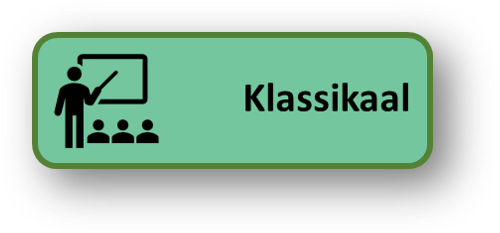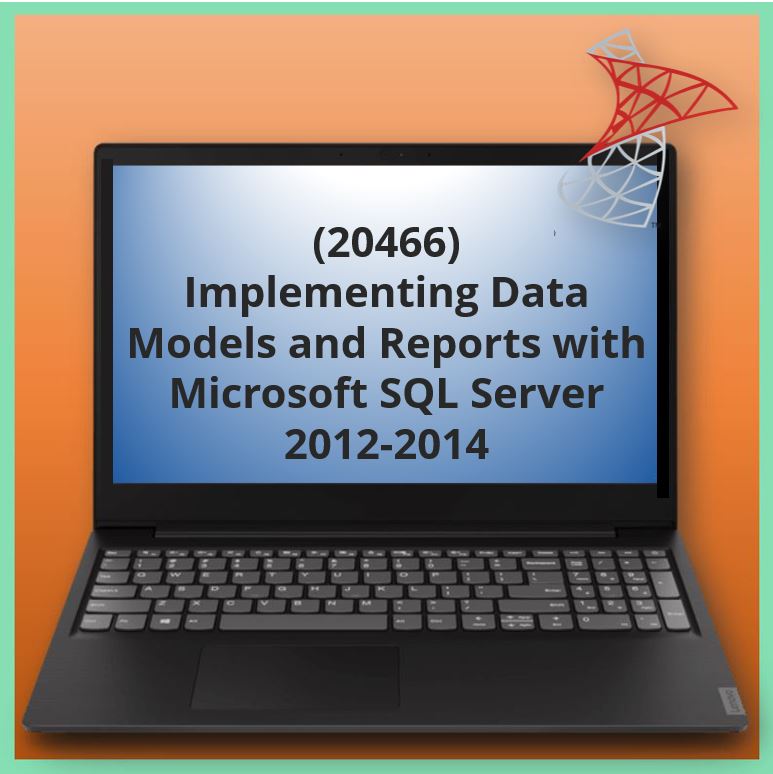Aangeboden leervormen


Implementing Data Models and Reports with Microsoft SQL Server 2012-2014 (20466)
Course Description
The focus of this course is on creating managed enterprise BI solutions. It describes how to implement multidimensional and tabular data models, deliver reports with Microsoft SQL Server Reporting Services, create dashboards with Microsoft SharePoint Server PerformancePoint Services, and discover business insights by using data mining.
Note: This course is designed for customers who are interested in learning SQL Server 2012 or SQL Server 2014. It covers the new features in SQL Server 2014, but also the important capabilities across the SQL Server data platform.
At Course Completion
After completing this course, students will be able to:
· Describe the components, architecture, and nature of a BI solution.
· Create a multidimensional database with Analysis Services.
· Implement dimensions in a cube.
· Implement measures and measure groups in a cube.
· Use MDX Syntax.
· Customize a cube.
· Implement a Tabular Data Model in SQL Server Analysis Services.
· Use DAX to enhance a tabular model.
· Create reports with Reporting Services.
· Enhance reports with charts and parameters.
· Manage report execution and delivery.
· Implement a dashboard in SharePoint Server with PerformancePoint Services.
· Use Data Mining for Predictive Analysis

Voor wie
This course is intended for database professionals who need to fulfill a Business Intelligence Developer role to create analysis and reporting solutions. Primary responsibilities include:
· Implementing analytical data models, such as OLAP cubes.
· Implementing reports, and managing report delivery.
· Creating business performance dashboards.
· Supporting data mining and predictive analysis.
Programma
Module 1: Introduction to Business Intelligence and Data Modeling
As a SQL Server database professional, you may be required to participate in, or perhaps even lead, a project with the aim of implementing an effective enterprise BI solution. Therefore, it is important that you have a good understanding of the various elements that comprise a BI solution, the business and IT personnel typically involved in a BI project, and the Microsoft products that you can use to implement the solution.
Lessons
· Elements of an Enterprise BI Solution
· The Microsoft Enterprise BI Platform
· Planning an Enterprise BI Project
Lab : Exploring a BI Solution
· Exploring the Data Warehouse
· Exploring the Analysis Services Data Model
· Exploring Reports
After completing this module, you will be able to:
· Describe the elements of a typical BI solution.
· Select appropriate Microsoft technologies for a BI solution.
· Describe key considerations for planning a BI project.
Module 2: Creating Multidimensional Databases
This module provides an introduction to multidimensional databases and introduces the core components of an Online Analytical Processing (OLAP) cube.
Lessons
· Introduction to Multidimensional Analysis
· Creating Data Sources and Data Source Views
· Creating a Cube
· Overview of Cube Security
Lab : Creating a Multidimensional Database
· Creating a Data Source
· Creating and Modifying a Data Source View
· Creating and Modifying a Cube
· Adding a Dimension
After completing this module, you will be able to:
· Describe the considerations for a multidimensional database
· Create data sources and data source views
· Create a cube
· Implement security in a multidimensional database
Module 3: Working with Cubes and Dimensions
This module describes how to create and configure dimensions and dimension hierarchies in an Analysis Services multidimensional data model.
Lessons
· Configuring Dimensions
· Defining Attribute Hierarchies
· Sorting and Grouping Hierarchies
Lab : Defining Dimensions
· Configuring Dimensions and Attributes
· Creating Hierarchies
· Creating a Hierarchy with Attribute Relationships
· Creating a Ragged Hierarchy
· Browsing Dimensions and Hierarchies in a Cube
After completing this module, you will be able to:
· Configure dimensions
· Define attribute hierarchies
· Sort and group attributes
Module 4: Working with Measures and Measure Groups
This module describes measures and measure groups. It also explains how you can use them to define fact tables and associate dimensions with measures.
Lessons
· Working with Measures
· Working with Measure Groups
Lab : Configuring Measures and Measure Groups
· Configuring Measures
· Defining a Regular Relationship
· Configuring Measure Group Storage
After completing this module, you will be able to:
· Configure measures
· Configure measure groups
Module 5: Introduction to MDX
This module describes the fundamentals of MDX and explains how to build calculations, such as calculated members and named sets.
Lessons
· MDX Fundamentals
· Adding Calculations to a Cube
· Using MDX to Query a Cube
Lab : Using MDX
· Creating Calculated Members
· Querying a Cube by Using MDX
After completing this module, you will be able to:
· Describe MDX
· Add calculations to a cube
· Describe how to use MDX in client applications
Module 6: Enhancing a Cube
This module describes how to enhance a cube with Key Performance Indicators (KPIs), actions, perspectives, and translations.
Lessons
· Working with Key Performance Indicators
· Working with Actions
· Working with Perspectives
· Working with Translations
Lab : Customizing a Cube
· Implementing an Action
· Implementing Perspectives
· Implementing a Translation
After completing this module, you will be able to:
· Implement Key Performance Indicators
· Implement Actions
· Implement Perspectives
· Implement Translations
Module 7: Implementing an Analysis Services Tabular Data Model
This module describes Analysis Services tabular data models and explains how to develop a tabular data model using the SQL Server Data Tools for Business Intelligence (BI) add-in for Visual Studio.
Lessons
· Introduction to Analysis Services Tabular Data Models
· Creating a Tabular Data Model
· Using an Analysis Services Tabular Data Model in the Enterprise
Lab : Implementing an Analysis Services Tabular Data Model
· Creating an Analysis Services Tabular Data Model Project
· Configuring Columns and Relationships
· Deploying an Analysis Services Tabular Data Model
After completing this module, you will be able to:
· Describe Analysis Services tabular data model projects
· Implement an Analysis Services tabular data model
· Use an Analysis Services tabular data model
Module 8: Introduction to DAX
This module explains the fundamentals of the DAX language. It also explains how you can use DAX to create calculated columns and measures, and how you can use them in your tabular data models.
Lessons
· DAX Fundamentals
· Enhancing a Tabular Data Model with DAX
Lab : Using DAX to Enhance a Tabular Data Model
· Creating Calculated Columns
· Creating Measures
· Creating a KPI
· Implementing a Parent-Child Hierarchy
After completing this module, you will be able to:
· Describe the fundamentals of DAX
· Use DAX to create calculated columns and measures
Module 9: Implementing Reports with SQL Server Reporting Services
This module introduces Microsoft SQL Server Reporting Services and discusses the tools and techniques that a professional BI developer can use to create and publish reports.
Lessons
· Introduction to Reporting Services
· Creating a Report with Report Designer
· Grouping and Aggregating Data in a Report
· Publishing and Viewing a Report
Lab : Creating a Report with Report Designer
· Creating a Report
· Grouping and Aggregating Data
· Publishing a Report
After completing this module, you will be able to:
· Describe the key features of Reporting Services
· Use Report Designer to create a report
· Group and aggregate data in a report
· Publish and view a report
Module 10: Enhancing Reports with SQL Server Reporting Services
This module describes how to enhance a SQL Server reporting Services report with charts and other visualizations, and how to use parameters to filter data in a report.
Lessons
· Showing Data Graphically
· Filtering Reports by Using Parameters
Lab : Enhancing a Report
· Adding a Chart to a Report
· Adding Parameters to a Report
· Using Data Bars and Sparklines
· Using a Map
After completing this module, you will be able to:
· Use charts and other visualizations to show data graphically in a report
· Use parameters to filter data in a report
Module 11: Managing Report Execution and Delivery
This module describes how to apply security and report execution settings, and how to create subscriptions to deliver reports.
Lessons
· Managing Report Security
· Managing Report Execution
· Subscriptions and Data Alerts
· Troubleshooting Reporting Services
Lab : Configuring Report Execution and Delivery
· Configuring Report Execution
· Implementing a Standard Subscription
· Implementing a Data-Driven Subscription
After completing this module, you will be able to:
· Configure security settings for a report server.
· Configure report execution settings to optimize performance.
· Use subscriptions and alerts to automate report and data delivery.
· Troubleshoot reporting issues
Module 12: Delivering BI with SharePoint PerformancePoint Services
This module introduces Microsoft SharePoint Server as a platform for BI, and then focuses on building BI dashboards and scorecards with PerformancePoint Services.
Lessons
· Introduction to SharePoint Server as a BI Platform
· Introduction to PerformancePoint Services
· PerformancePoint Data Sources and Time Intelligence
· Reports, Scorecards, and Dashboards
Lab : Implementing a SharePoint Server BI Solution
· Creating a SharePoint Server Site for BI
· Configuring PerformancePoint Data Access
· Creating PerformancePoint Reports
· Creating a PerformancePoint Scorecard
· Creating a PerformancePoint Dashboard
After completing this module, you will be able to:
· Describe SharePoint Server as a BI platform
· Use PerformancePoint Services to deliver BI functionality
· Configure PerformancePoint Data Sources
· Create Reports, Scorecards, and Dashboards
Module 13: Performing Predictive Analysis with Data Mining
This module introduces data mining, describes how to create a data mining solution, how to validate data mining models, how to use the Data Mining Add-ins for Microsoft Excel, and how to incorporate data mining results into Reporting Services reports.
Lessons
· Overview of Data Mining
· Creating a Data Mining Solution
· Validating a Data Mining Model
· Consuming Data Mining Data
Lab : Using Data Mining to Support a Marketing Campaign
· Using Table Analysis Tools
· Creating a Data Mining Structure
· Adding a Data Mining Model to a Data Mining Structure
· Validating a Data Mining Model
· Using a Data Mining Model in a Report
After completing this module, you will be able to:
• Describe the key data mining concepts and use the Data Mining Add-ins for Excel
• Create a data mining solution
• Validate data mining models
• Use data mining data in a report
Voorkennis
This course requires that you meet the following prerequisites:
• At least 2 years’ experience of working with relational databases, including:
• Designing a normalized database.
• Creating tables and relationships.
• Querying with Transact-SQL.
• Some basic knowledge of data warehouse schema topology (including star and snowflake schemas).
• Some exposure to basic programming constructs (such as looping and branching).
• An awareness of key business priorities such as revenue, profitability, and financial accounting is desirable.
Examen
Microsoft 070-466 Implementing Data Models and Reports with Microsoft SQL Server
Duur training
Klassikaal: 3 dagen
Open leercentrum: 5 dagen







